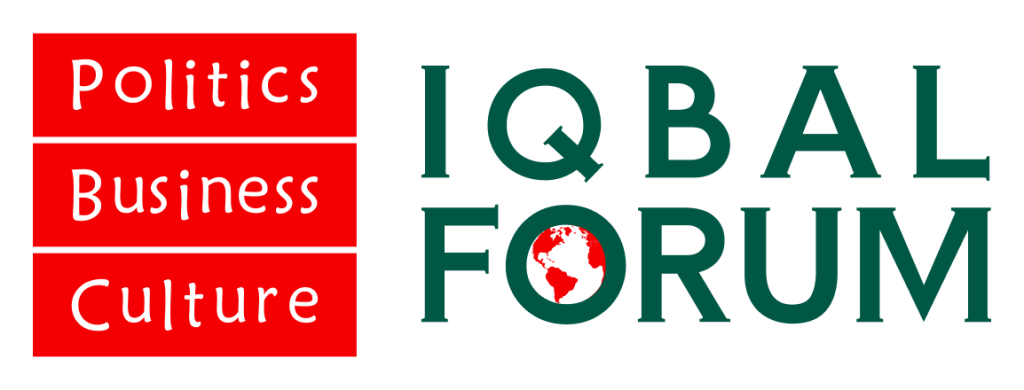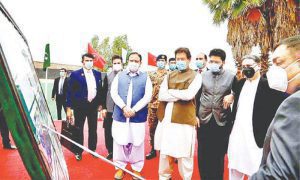Even with more children attending school, Pakistan is struggling with a learning crisis
Nearly four out of five children under the age of 10 in Pakistan struggle to read simple text. At the same time, only 51pc of students can solve a two-digit arithmetic problem.
Pakistan has a staggering 22.8 million out-of-school children — a statistic that has significantly shaped the country’s education reform agenda over the past decade. However, most people remain unaware of another sobering fact — nearly four out of five children under the age of 10 in Pakistan struggle to read simple text. This means that even children who do attend primary school regularly are not acquiring the reading skills expected for their age.
Despite the challenges posed by Covid-19 and the 2022 floods, Pakistan’s enrolment indicators reflect commendable progress. Although the aspiration of achieving universal school enrolment remains a distant dream, evidence from the provinces, especially Punjab, reveals a significant increase in enrolment rates. Between 1998 and 2020, Punjab succeeded in admitting 13 million children to schools, leading to a 19 per cent surge in the proportion of enrolled children in household surveys.
Notably, this progress has been most pronounced among girls, with a 24pc rise in enrolment. This can be primarily attributed to the success of conditional cash transfer programmes explicitly designed to encourage girls’ enrolment. Data reveals, however, that as many as 37pc of girls aged five to 16 are currently not attending school.
While education reform efforts over the last decade have led to improvements in school enrolment across the country, the education system still falls short in a crucial area — ensuring children’s actual learning within school. “Learning poverty”— a term coined by the World Bank which means being unable to read and understand a simple text by age 10 — is plaguing almost every classroom an average Pakistani parent can afford for their children.
Learning poverty
Learning poverty at the foundational level has become a serious concern that compelled various education experts and key stakeholders to convene at the Pakistan Learning Conference in June, earlier this year. The participants hoped to formulate a national strategy that would urgently address the gap between age and learning levels.
The table below shows that Pakistan significantly lags behind both, the regional average for South Asia, and the global averages for lower-middle-income countries (LMICs):
Learning poverty comparison of Pakistan with the South Asian and LMIC average. — Source: Tabadlab
In 2022, Pakistan had a learning poverty rate of 77pc. In such crises, the most vulnerable groups are disproportionately affected. Learning poverty, for example, is highest among the poorest communities, and the most impoverished children are more likely to be out of school, especially in rural areas.
Another national-level survey conducted by the Annual Status Of Education Report in 2021 sheds light on learning levels — it found that only 55pc of fifth-grade children can read a simple story in Urdu, Pashto, or Sindhi, while 44pc struggle to read a basic sentence in English. At the same time, only 51pc of students were able to solve a two-digit arithmetic problem. The survey also underscored the disparities in learning across provinces, with proficiency in English as low as 39pc in Balochistan, contrasting with the highest rate of 73pc in Punjab.
Urgent intervention is required to address this foundational learning gap and improve school children’s basic literacy and numeracy skills. The learning conference concluded with several key commitments that garnered unanimous agreement among all stakeholders, including the government, development partners, and community leaders.
It is imperative that we remain mindful of how we can build upon those commitments and work towards achieving better learning outcomes for our children. We propose three key areas for reform:
- Specialised training for teachers at early grade levels.
- Improving assessment mechanisms to measure children’s actual learning levels.
- Fostering a reading culture within our communities to build support for children’s learning beyond classrooms.
Who will deliver the foundational learning?
To effectively address the larger problem, we must first acknowledge the significance of foundational learning, which includes basic literacy, numeracy, and transferable skills that serve as the fundamental building blocks for a lifetime of learning. Acquiring these fundamental skills during the early stages lays the groundwork for more advanced learning later in life.
However, imparting these essential skills to students is not a simple feat one can undertake without specialised training. Regrettably, due to a lack of specialised training, public primary schools presently face a severe shortage of young teachers who possess the necessary core competencies for delivering these foundational learning skills. At the same time, the primary education system faces an increased burden of developing literacy and numeracy skills in students from scratch due to the limited focus towards Early Childhood Education (ECE) in Pakistan. Trained teachers and parental involvement are the two most critical factors in developing children’s academic, social and cognitive skills from birth through preschool.
Hence, it becomes imperative to establish a specialised teaching cadre rooted in crucial ECE teaching proficiencies to support and improve students’ learning outcomes as they transition from pre-primary to primary schools. This initiative aims to enhance the quality of foundational learning right from the outset.
At the conference, Ahmed Ali*, a recent graduate who teaches at a public school in Khana Dak, Islamabad, shared his experience: “Often, the most senior teachers, nearing retirement age, are assigned to the early grades in my school. They lack the specific skills and modern pedagogical practices needed to deliver learning outcomes to children at the foundational level effectively. When traditional teaching methodologies are employed at such an early stage, it not only results in learning deficiencies in literacy and numeracy but also compels students to resort to rote learning techniques as they progress to higher grades without bridging the learning gap at the foundational level.”
These traditional teaching methods often involve “teaching to the test” where the sole emphasis is on covering the mandatory syllabus within the allotted time without actively engaging with the students to clear concepts. A prevalent practice among low-cost public and private school teachers is to assist students in marking answers to the exercise questions in their textbooks, followed by instructing them to memorise these answers without delving into a thorough explanation of the underlying concepts. These practices become even more prevalent as students approach high-stakes external exams while carrying foundational learning deficiencies.
In contrast, Ali is using the Teaching at the Right Level (TaRL) approach in his grade four classroom, through which he claims to have bridged a learning gap of almost 1.6 years for some students within one year by regularly tracking the learning levels of students and adapting his teaching practices according to their needs.
TaRL has been successfully developed and used in countries like India and Nigeria and has consistently improved student learning outcomes in early grade levels. Its tailored instruction based on individual students’ learning levels effectively bridges gaps in foundational skills, resulting in improved literacy and numeracy.
The approach is driven by a simple insight — primary school classrooms in developing countries frequently consist of numerous children at different learning levels. Therefore, unlike conventional classroom teaching, the TaRL approach deviates from the classroom’s uniform curriculum and supports educators by organising students into clusters based on similar learning stages and tailoring instruction to their learning levels. The teacher continually evaluates students and shifts them to more advanced groups as they progress. If practised on a large scale, such an approach can potentially improve the learning outcomes of early-grade students in Pakistan.
Establishing a dedicated teaching cadre for foundational learning equipped with the latest tools, assessment techniques, and methodologies, such as Early Grade Reading Assessment (Egra) and TaRL, has the potential to revolutionise the design and delivery of instructions within classrooms. This effort could also redefine the role of assessments, which in the current regime primarily function only to promote students to the next grade with a superficial understanding of how well they grasped what they were meant to learn.
Now, let’s talk about assessments. To improve learning outcomes at the foundational level, we must establish a nationally representative learning assessment mechanism for reading on a priority basis. But one may ask, why is this important?
The role of assessments in enhancing learning outcomes
Assessments have a dual purpose of measuring the learning levels of students and holding teachers accountable for achieving the learning objectives. Unfortunately, both purposes remain largely unmet in Pakistan, with most assessments focusing primarily on high-stakes/board exams and summative assessments while neglecting the importance of formative assessments. There is a high degree of variation in how teachers administer assessments across different types of schools, which is reflected in the large learning outcome disparities among students.
In general, teachers in high-cost private schools tend to design and conduct formative assessments more frequently than their low-cost private and public school counterparts. This practice plays a crucial role in promoting Student Learning Outcomes (SLOs) by providing students with personalised feedback and also enables teachers to identify individual learning gaps effectively.
Conversely, teachers in low-cost schools who often rely heavily on summative evaluations require more training and practice to create formative assessments. Some parents also resort to home-based assessments to assess their children’s learning progress. However, parents from lower socio-economic backgrounds often face challenges in evaluating their children’s learning levels at home due to multiple socioeconomic factors. These varying levels of investment from parents and teachers further exacerbate learning disparities.
To address these issues, a large-scale, comprehensive reading assessment mechanism should be established to periodically evaluate the elementary education system’s overall health. The National Education Assessment System conducts a nationally representative assessment for grades four and eight, every four years. However, this system needs to be further strengthened to ensure that established learning standards are met and that reports are timely published to inform policymakers.
At the classroom level, teachers should be encouraged to shift their focus towards formative assessments, which assess students’ learning outcomes on an instruction-by-instruction basis. This approach creates a continuous feedback loop that collects real-time data on students’ progress. The accumulated data can accurately indicate the extent of mastery achieved by each student in alignment with the learning objectives of each specific instruction. Over months and years, this data can be tracked for individual students and entire classrooms, facilitating the timely identification of learning gaps. This, in turn, will enable teachers to focus on targeted interventions through evidence-based instructional design.
Furthermore, incorporating simple informal assessment practices such as “exit slips” in classrooms can help teachers maintain the essential feedback loop between assessments and instruction design. Exit slips are written responses to a question or problem posed by the teacher at the end of a lesson to assess students’ understanding of the material. The TaRL approach preserves this connection without overly relying on a rigid, defined curriculum, allowing greater adaptability to the diverse needs of all children.
However, it’s also important to understand that teaching with such an approach requires exhaustive human resources, and it will be impossible to effectively achieve the targets with the current teacher-to-student ratios in public primary schools.
Teachers are often burdened with supplementary administrative, election, census, and other duties, which affect their time, motivation and energy for teaching, and their capacity to track the learning outcomes of each student carefully.
Another teacher, Irshad Ali*, who teaches at a primary school in the suburbs of Islamabad, commented: “For three months, most teachers were unavailable due to census duties in my school. During this time, we had to combine classes and teach up to 100 students in one class to make up for the shortage of teachers.”
Need to read
Lastly, one of the most significant steps we must take is to launch a comprehensive ‘daily reading hours’ programme. This initiative can be transformative if reading hours across all primary grades, irrespective of provincial or federal jurisdiction, are implemented correctly. The vision is clear — an hour of reading for every child, every day.
Simultaneously, we must foster a reading culture within communities as well. Achieving this goal requires the involvement of various sectors, as highlighted by Huma Zia, programme lead at Pak Alliance for Maths and Science: “School and classroom-centric literacy initiatives have to be supported with an enabling ecosystem that promotes and appreciates reading culture in the community. This requires a complementing push from various stakeholders and state departments. Some initial avenues could include reviving public libraries (through corporate or industry partnerships), designating a National Reading Week, and organising national and international spelling bee and/or storytelling competitions.
“In addition, parents and community members could be engaged to conduct regular storytelling sessions in public spaces like parks, museums, and cultural events, instilling the love and importance of reading.”
The learning crisis needs immediate attention
Even though “crisis” seems to have become an almost clichéd term for Pakistan nowadays when coupled with the word “learning,” it might not sound as alarming as an economic, political, constitutional or climate crisis. However, we must understand that learning poverty lies at the heart of all other issues in Pakistan, whether political or economic and while it may be slow-brewing and often silent, it is potentially fatal for the nation’s growth in the long run.
The crisis at its core can be traced to Pakistan’s underdeveloped human capital, contributing to sluggish productivity and stunted economic growth. Addressing this challenge is crucial for facing issues in the future, whether it is climate change or escalating extremism. Building children’s foundational learning today will help us nurture a citizenry equipped with the knowledge, critical thinking, and awareness needed to tackle adversities in the future.
We must take action locally to establish systems and build capacity for addressing this challenge within our communities. The pivotal challenge ahead lies in our capacity to effectively execute these changes. While this feat is certainly within reach, it mandates a collaborative effort encompassing all members of society, with a particular emphasis on teachers, parents, and students.
These real stakeholders play a vital role in augmenting learning outcomes within and beyond classrooms. At the very least, the issue of learning poverty in Pakistan deserves our immediate attention to the extent that we start asking our children a simple question every day: “Aaj kya seekha?” [What did you learn today?]





